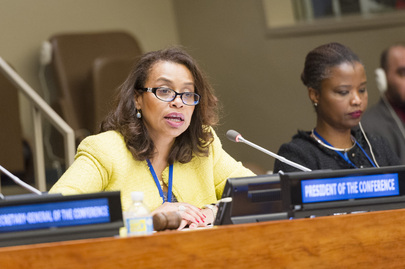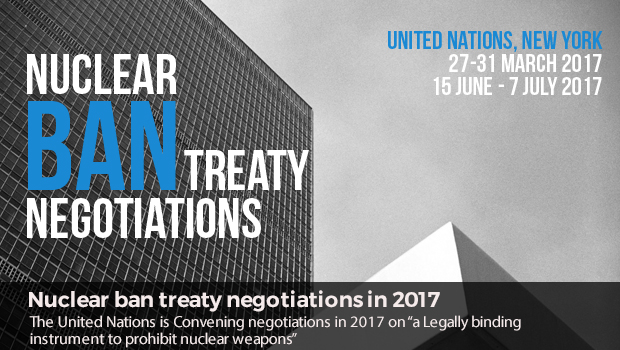The international effort for the creation of a more safe and peaceful world is limiting the spread of nuclear technology by discouraging its non-peaceful utility. The control and counter of military oriented utility of nuclear technology has become an unachievable dream of a world immersed in conflicts and protracted clashes. The realist driven strategic inflexibilities between states along with their incompatible national standings against each other dragged the world to the brink of nuclear catastrophe. The proliferation of nuclear material and related technology has become an undisputable reality of the contemporary world. Since the doctrine-less dropping of nuclear bombs on the twin cities of Japan by the US, the damage caused by nuclear weapons shocked the whole and sparked a sense of insecurity. The nuclear hegemony of the US was immediately challenged by former Soviet Union on the eve of Washington–Moscow four decades long confrontation. During the Cold War, it was impossible to imagine a world out of nuclear shadows, because the unending nuclear race revolutionized the traditional notion of national security. The combination of security against potential rivals coupled with acquisition of a prestigious and influential role in international relations became the fundamental imperatives for achieving nuclear weapons status for nations.
The destructive nature of military oriented nuclear technology and its global reach forced the international community to quickly chalk out a plan of countering its spread. The efforts for preserving peace and creating a world free of nuclear weapons resulted in numerous initiatives and countless activities globally, but an international environment of protracted rivalries and contesting behaviour made states less loyal to global peace and stability. The strategic competition in a system of political inconsistencies and economic disparities resulted in global arms race which hindered various platforms of arms control and disarmament. To prevent the further proliferation of nuclear weapons in addition to the control of manufactured nuclear weapons are the two objectives which has intensified nuclear politics. In this regard, the performance of international non-proliferation is degrading with each passing day because the out of bottle nuclear genie is changing its face. A complex structure of unilateral, bilateral, and multilateral initiatives are being discussed at various international podiums for the maintenance of a world free from nuclear threats.
The recent fashion in the ongoing efforts for elimination of nuclear fears started a debate of Nuclear Weapon Ban Treaty. The negotiation was for a treaty fundamentally emphasizing a biding worldwide agreement to prohibit nuclear weapons which will ultimately lead the international community towards total elimination. In end 2016 the UN General Assembly approved a plan for negotiation on the treaty prohibiting nuclear weapons. The UNGA resolution was supported by 113 states, 35 nations were against it, in addition to 13 abstaining. The negotiations were planned to start in March 2017 which will continue till July 2017. In December 2016, the international community under the broader framework of UN visualized 2017 as a historical year for finalizing the Nuclear Weapon Ban Treaty. The new agreement is ambitious for collecting support from state governments, international organizations and civil society. Efforts to gather people from the world’s capitals are an endeavour that constitutes a global commitment for the development of a nuclear weapon free world.
In March 2017, the first meeting of the proposed treaty was held at UN headquarter, New York, it was attended by 123 states which indicates great support in preventing nuclear competition among nations. The treaty is designed to declare the illegitimate role of nuclear weapons by winning the loyalty of nuclear weapons states. The attainment of such impartial, unbiased, and unprejudiced agenda is easy to imagine, but difficult to practice in the presence of stringent nuclear arms race in which states are determined in countering their rivals by adopting different strategies. The United Nations General Assembly is no doubt determined by calling all nations for finalizing the treaty and opening it for signatures and ratifications, but the entrenched and hard core realities of the nuclearized world engrossed in incessant strategic wrestling cannot be simply ignored.
The costly national efforts, large amount of manpower, huge infrastructure followed by logically varying convincing reason for achieving nuclear weapons will never let the states suddenly undo their nuclear weapons status by subscribing to the final draft Nuclear Weapon Ban Treaty. The nuclear history of international system contains several analogous efforts about prevention of nuclear weapons under non-existing supportive behaviours from nuclear armed countries. Therefore, the success of the ongoing negotiation of the treaty is heavily reliant on expected support of declared nuclear weapon states. In this way, the conclusion of the final text of the treaty, after carrying a cooperative role of formally accepted, unaccepted, and ambiguous nuclear weapons capable states, is practically a difficult task for the proponents of global nuclear abolitionist campaign. In view of a long history of multidimensional record of unsuccessful arms control and disarmament efforts, it is certainly possible to estimate the success of continuing negotiations for a new initiative. The history undoubtedly depicts the ban of nuclear weapons is entirely a documented scheme, and it always strays away from reality. The great powers, five permanent members of United Nation Security Council have always been reluctant in accepting a ban on nuclear weapons which will jeopardize their own nuclear armed status. Therefore, an opposition cemented in their vested strategic interests of the P-five to the Nuclear Weapon Ban Treaty will likely be a foreseeable future of the proposed treaty.

The account of political and military enmity under an extensive record of the Cold War conflict between US and USSR engaged leaders of both states in protracted arms race parallel to reluctantly agreeing on halting the further spread of nuclear weapons. Their hesitant approach towards eradicating nuclear shades from the international system and their stretch beyond two states proved to be futile. The domino effect of military oriented nuclear technology gradually proliferated across the world. The end of east–west rivalry ended in the dismantling of the USSR and ended the age of worldwide bipolarity, but the establishment of a unipolar international structure resulted in American global dominance without effectively abolishing the nuclear darkness from international relations. The end of the Cold War ended Soviet–American rivalry, but it did not end the eternal politics among five nuclear powers. Apparently devoted their dedication to the vision of arms and disarmament, every nuclear armed state has attempted to preserve its own nuclear status while critically examining and opposing the nuclear capabilities of others. In this way, the number of mechanisms for controlling and preventing the proliferation of nuclear technology left the Permanent Five engrossed in an unending debate instead of persuading other states by creating appreciable examples.
The consensus of nuclear and non-nuclear mutually will guarantee the accomplishment of final agenda of the treaty. The collaborative behaviour of the international community beyond the P-5 will be the primary concern of the ongoing dialogue for the success of the treaty which is not an unattainable task. The actual challenge comes from five nuclear weapons states or the Permanent Five, because unanimous consent in the form of an undisputed agreement among them is an impossible mission. The major powers always play a key role in establishing and promoting international regime based on multilateral efforts. Their influential role over their allies inevitably impacts upon the performance of global multistate frameworks. The profound impact of great power politics over international development, peace, security, and stability is an irrefutable reality. Therefore, the determination inherited in a common agreement for positively finalizing the talks for a future treaty for eliminating the existence of nuclear weapons from the face of the earth is essentially a prerequisite step for further progress of the Nuclear Weapon Ban Treaty.
The journey for achieving the goal of a nuclear free international system has been for the first time embraced with an approach for prohibition of nuclear weapons in a comprehensive and universal way. NPT, the main pillar of international non-proliferation regime partially introduced the same notion in 1970 which has gradually been undermined in different ways by the states. The efforts of nuclear abolitionists are less inclined to witness the productive results. The superpowers or formally recognized nuclear weapon states carry dichotic values and are willing to merely provide support to the Nuclear Weapon Ban Treaty, but a successful future of this dream is dependent on unconditional loyalty of the members of the nuclear club. In this way, before structuring the future mechanism for addressing the effects of nuclear technology, it is indispensable to learn lessons from history. The growing quarrelsome game among the great powers explicitly abandoned the dreams of a peaceful and stable world. An analytical overview of the four decades long confrontational characteristics of the bipolar world under the Cold War has witnessed various disarmament endeavours which could deliver opportunity for productive dialogue on Nuclear Weapon Ban Treaty.




